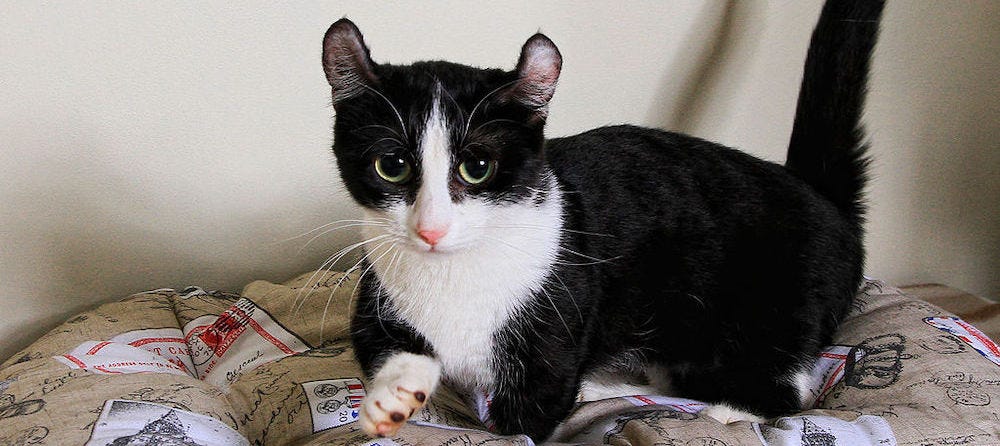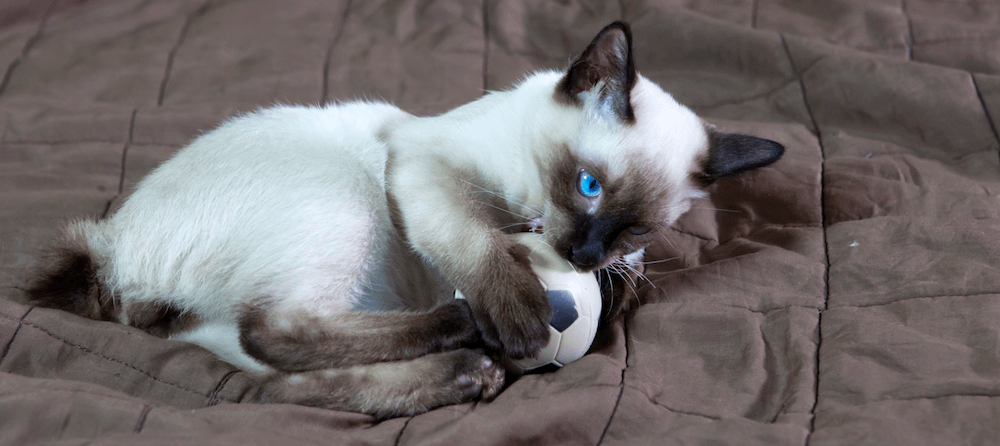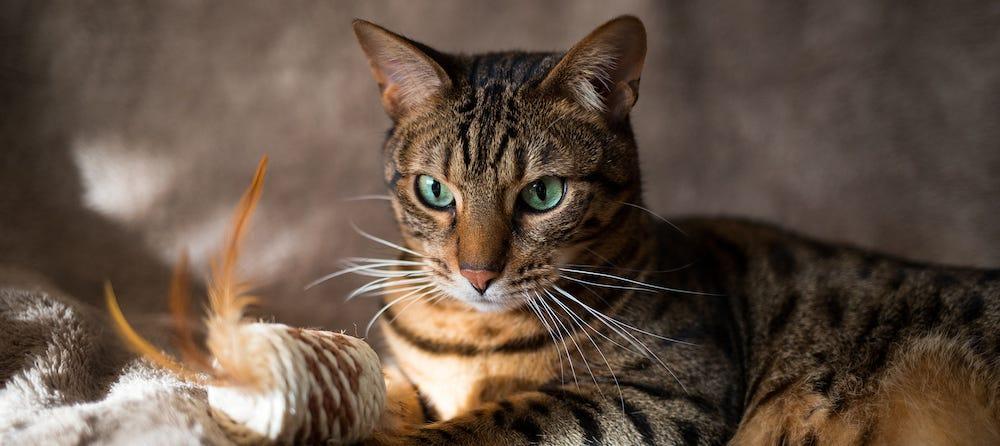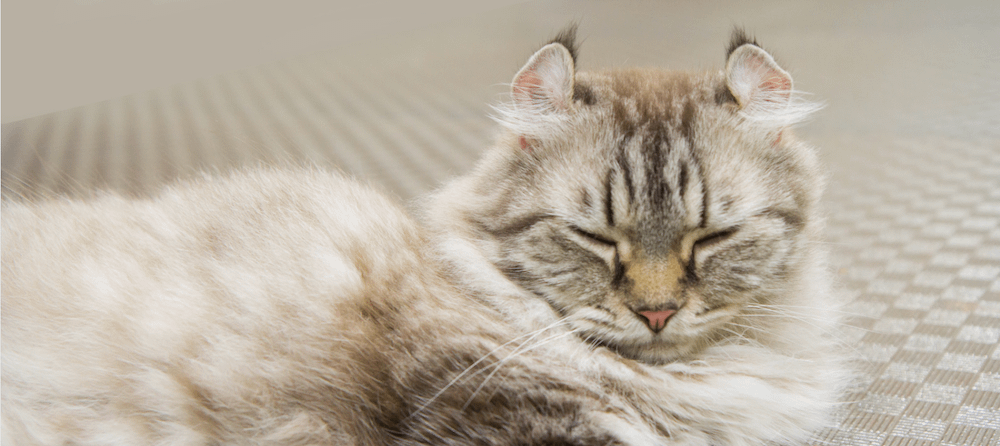The Kinkalow is a rare but absolutely adorable breed of cat that can’t help but capture your heart. If you’ve never heard of the Kinkalow, that isn’t much of a surprise. You’re not very likely to come across one, let alone know what they look like based on their name alone. However, now that you’re introduced to one, you might just become obsessed—these cats are simply too amazing!
The Kinkalow cat holds some of the most precious characteristics known in the feline world. These miniature cats are a mix between the American Curl and Munchkin cat breeds. Yes, that means they have tiny little legs and curled-back ears: Two traits known for their unique adorableness.
Not only is the Kinkalow cat a rarity to look at, but they are extremely friendly, loving, and calm, making them one of the best cat breeds to bring into your home.
Keep reading to learn more about the Kinkalow and their charming habits.
| Kinkalow cat | ...at a glance |
|---|---|
| Personality | Sociable, playful, curious |
| Life expectancy | 12-15 years |
| Weight | 3-7 lbs |
| Coat & colors | Short or semi-long; various colors & patterns |
| Energy level | Medium |
| Affection level | High |
| Friendliness | High |
| Shedding level | Medium |
| Required grooming | Medium |
Overview of the Kinkalow cat

The Kinkalow is a very small cat that is hard to mistake for any other breed. If you see one lying down, you might assume they are an American Curl due to their curly ears. But as soon as they stand up and are on the move, their short legs become very apparent.
This cat is thought to be named because of the “kink” in their ears and how “low” they are to the ground when they move. Besides these two distinct features, this kitty has many positive attributes.
Weight
Kinkalow cats are tiny: Not just a small-sized breed, but truly one of the smallest. How small are we talking? They typically weigh between 3 and 7 pounds! They are like teacup kittens that can easily fit in the palm of your hand, especially as babies. As they age, they might grow a tad larger, but they are still very easy to handle.
Length
What makes these cats appear larger than 7 pounds is their slender, long bodies and tails. They are usually around 7 inches tall, and can be up to 10 inches in length. The longer the tail, the bigger they might appear. This is especially true since their hind legs are taller than their front legs, which elongates them.
Coat
A Kinkalow’s coat is very soft and inviting to pet. The coat can range from short to semi-long and comes in a variety of colors and patterns. Every Kinalow that you come across might look different than the last, but their curled ears and short legs will be present.
Life expectancy
You can consider the Kinkalow a small but mighty cat. They do a top-notch job of taking care of themselves, despite their size being half that of other domestic cat breeds.
They need a lot of love and attention to reach their full potential. Most Kinkalow cats live between 12 and 15 years when they are properly cared for. Frequent vet visits, a good diet, and an active lifestyle can contribute to a longer lifespan.
History of the Kinkalow cat

The Kinkalow cat is a fairly new breed, only originating in the 1990s. This occurred when an American breeder named Terri Harris bred together a Munchkin cat and an American Curl cat with both of their defining features in mind. The goal was to create a cat that had both curled ears and short legs, and that’s precisely what she got.
She and other breeders worked to help establish this new breed, which was eventually officially recognized as an experimental breed. This means breeders are still in the process of stabilizing the defining characteristics of curled ears and short legs.
Due to the newness of this breed, there is a lot of information that is unknown about them, specifically in relation to their genetic health, lifespan, and personality. Each Kinkalow cat that you come across might have distinct differences because they aren’t yet fully established or recognized by cat associations.
Characteristics of the Kinkalow cat
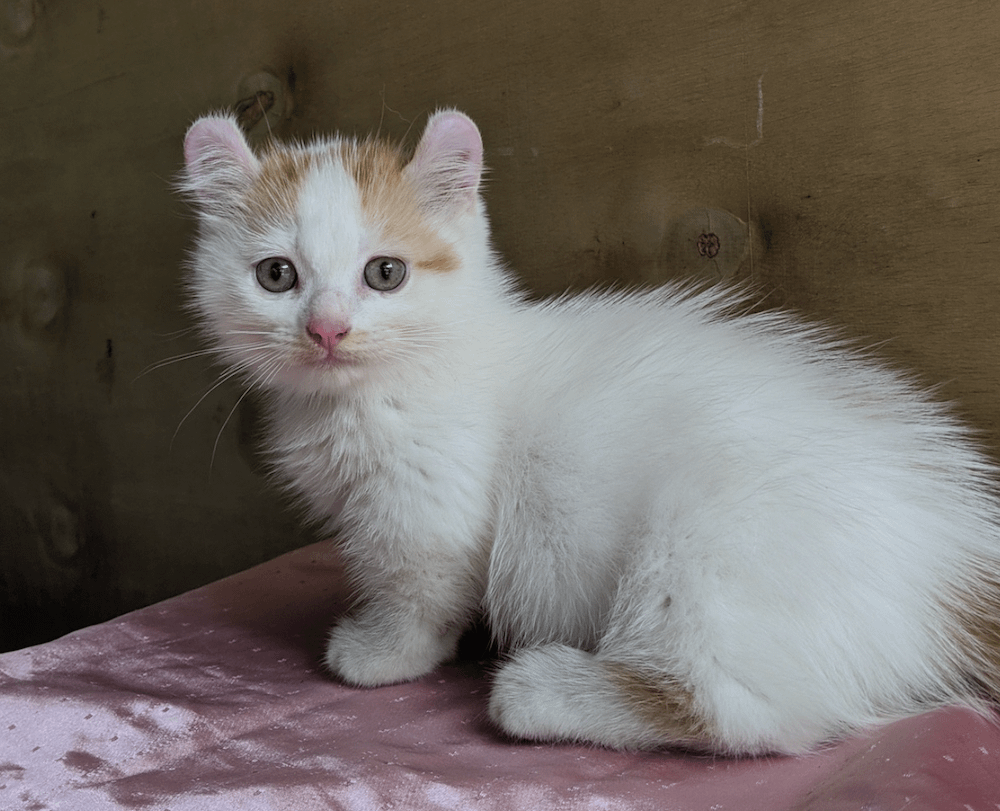
The appearance of the Kinkalow is what helps this cat stand out. You can instantly recognize the two cats that were bred to create this precious kitten. Their curled ears are distinct, just as their short, stout legs are.
Kinkalows often have tails that are longer than their body. Their hind legs will be longer than their front, which can make them appear to stand in a crouched position.
Kinkalow’s ears can vary in the degree of curliness. When a Kinkalow kitten is born, their ears usually start off straight, and as they age, they begin to curl backward. At around five months old, their ears are likely done curling back.
Personality and behavior
Kinkalows don’t merely look like forever kittens; they truly act like them too. Well into old age, the Kinkalow is running around and exhibiting kitten-like behaviors. They are active, playful, cuddly, and friendly. They are as happy to play fetch with you as they are to curl up on your lap at night.
Even though the Kinkalow is small, it doesn’t mean they have a small personality. These cats are famously outgoing and adventurous. If you lose sight of your Kinkalow, they might be trying to climb to the highest point in your house to get a better view of what’s around them. Having climbing structures for them to perch on (and scratch on) will help satisfy their need for adventure.
Kinkalows make great family pets because they get along well with everyone in the household, whether it’s children, other cats, or dogs. They might initially be shy towards strangers but are quick to open up. They prefer to be involved in the happenings around the house and to stick close to their humans. Here and there they need independence, but that only ever lasts a few hours before they’re trying to climb onto your lap again.
Caring for a Kinkalow cat
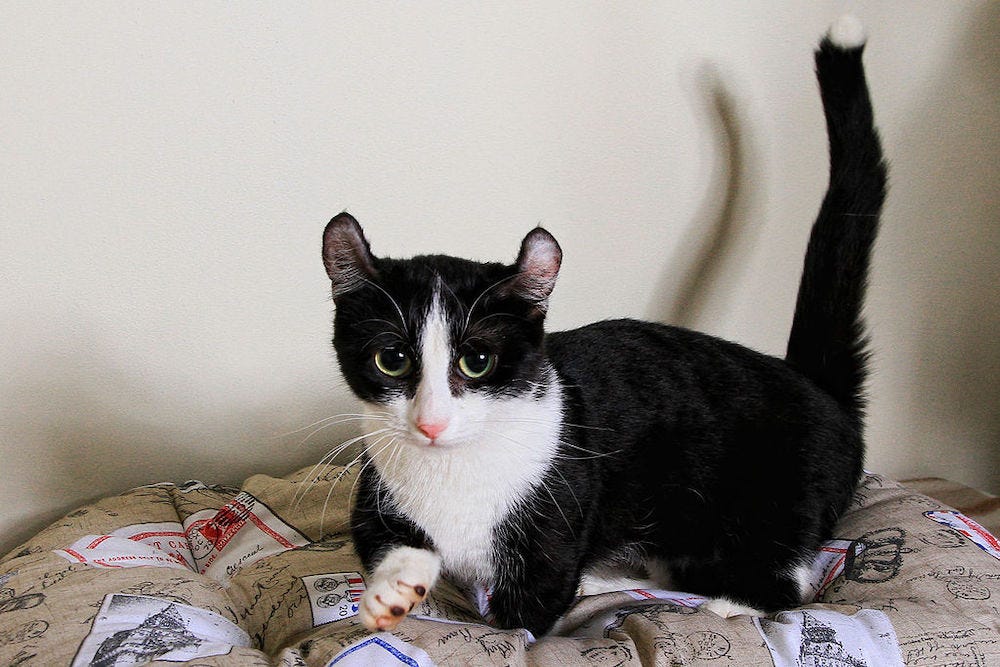
Kinkalow cats appear to be rather healthy—but because they are such a new breed, certain health-related risks are still unknown. They are active cats that do require consistent attention, but their care needs are overall easy to maintain. With regular check-ups at the veterinarian, any changes in their health and behavior should be recognizable.
Grooming
When it comes to grooming the Kinkalow, they do pretty well at keeping themselves clean. Their fur can range in length, meaning that the amount that your Kinkalow might shed could vary. They will need to be brushed weekly at the minimum, and for cats with longer fur, a few times a week can help detangle any knots.
Ear care for Kinkalows is vital because their cartilage is very delicate, and infections are more prone to happen. Do not try to force the ear a certain way, as it can cause damage to the cartilage, but keeping their ears clean can help prevent infections. You will also want to stay updated on cleaning their teeth to help prevent periodontal disease, and keep their nails trimmed.
Kinkalows aren’t very high-maintenance, but they do prefer a clean spot to do their business. Providing a self-cleaning litter box for your cats can be very useful, especially if you have more than one feline in the house. Cats prefer to use clean litter boxes; if your feline is improperly eliminating, a dirty litter box might be the culprit.
Health-related issues
The main issue with the Kinkalow is that their ears are more prone to infection. Because of the curl, they are more exposed and likely to have a wax build-up. Cleaning them frequently and talking to your vet about any concerns you might have can help keep your Kinkalow’s ears in tip-top shape.
Munchkin cats may be prone to issues with their spine and joints as a result of their short legs and long bodies. Keeping an eye on your cat and watching for any changes in behaviors is important.
Adopting a Kinkalow
Kinkalow cats are not commonly encountered, but if the opportunity arises to adopt one, you should absolutely do so. They are sweet, loving cats that will become a staple in your family. Not only are they outgoing and personable, but they are family-oriented and extremely adaptable.
They make for a great companion to have in your home and will surprise you with just how spirited they are!
Sources:
- Munchkin - Limb Deformity | UFAW
- Osteochondrodysplasia In Scottish Fold Cross-Breed Cats | NCBI
- Cat Breeds | Catonsville Cat Clinic
- Breed Recognition | Rare and Exotic Feline Registry
- Inappropriate Elimination Disorders in Cats | VCA Animal Hospitals
Photo credits: © Kirimiti / CC-BY-SA-3.0
